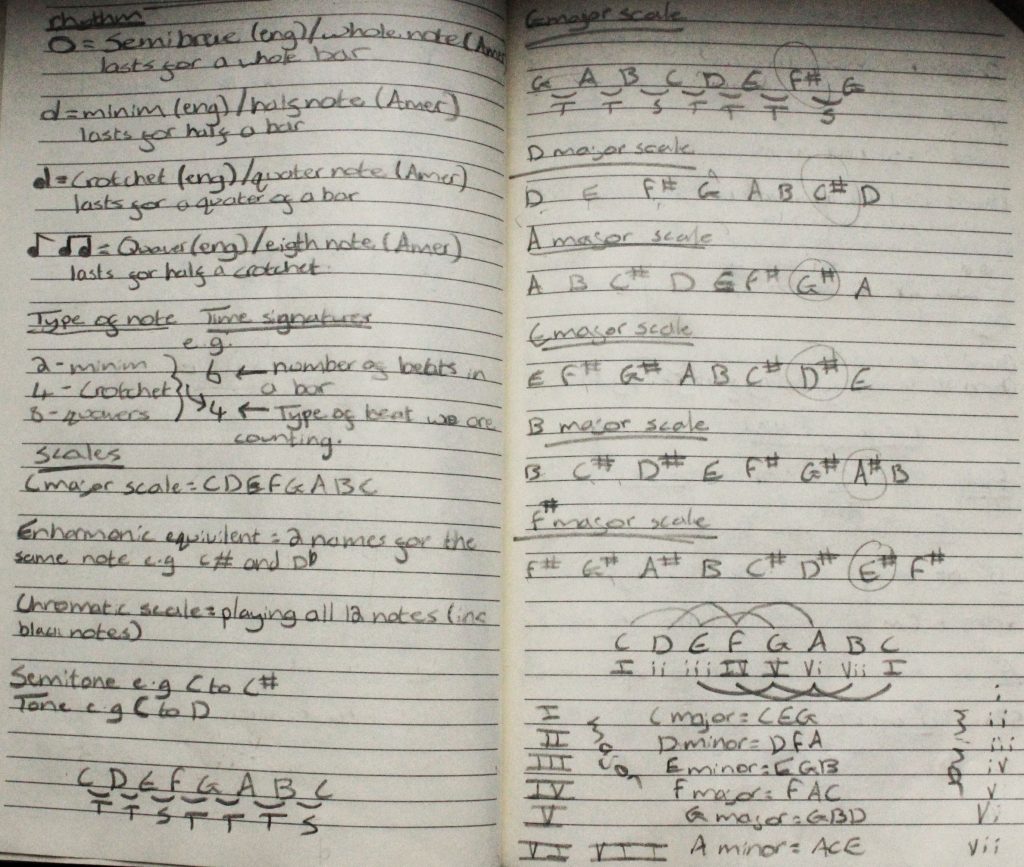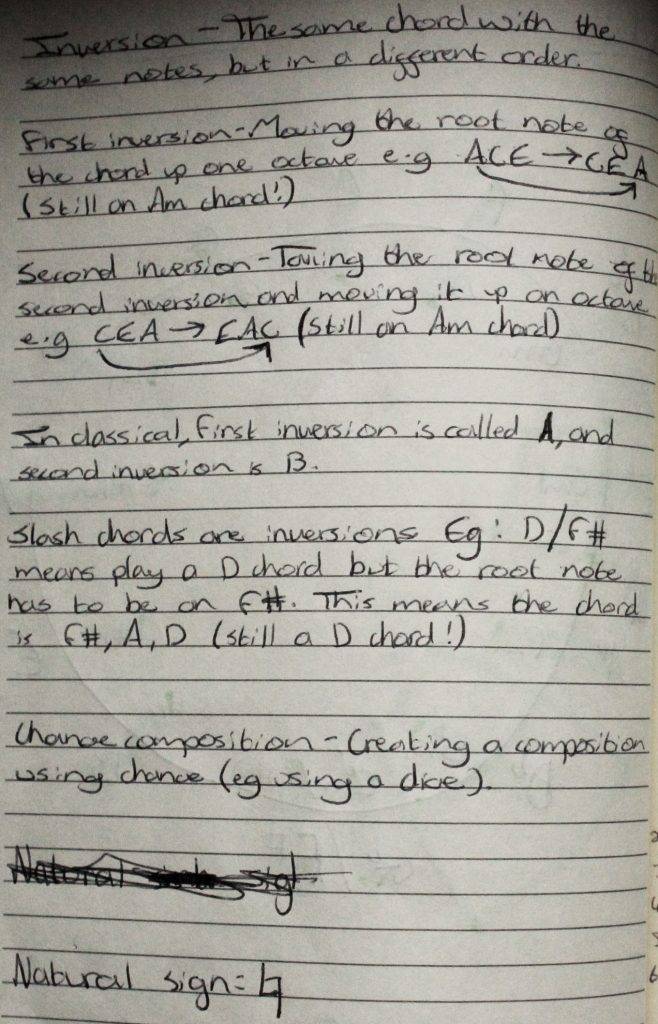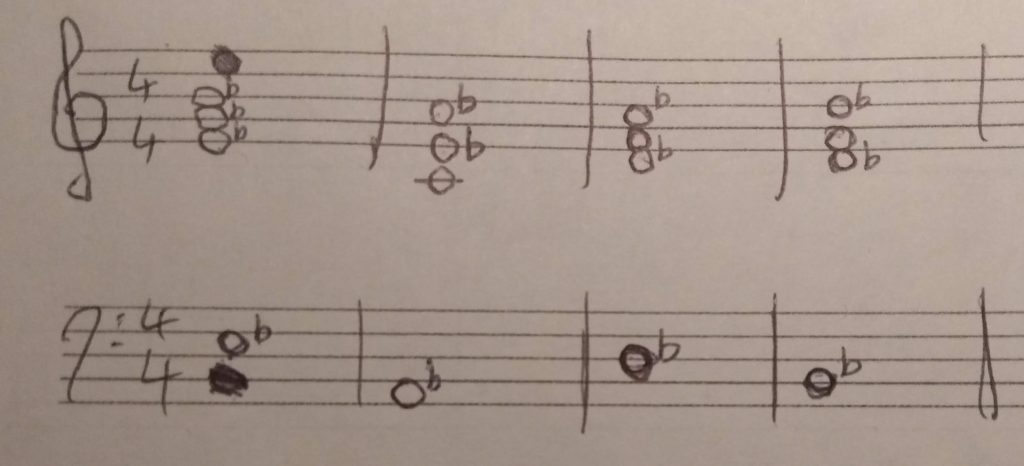I think music theory is very important if you want to be able to create original scores and productions. Some famous musicians don’t even know music theory, however, I believe it will hugely help me as I will be able to know more about rhythm. As a drummer, knowing how to easily identify scales and the chords in it was very difficult but now I have attended the music theory lessons, I understand how it all works and I feel fairly confident in my own knowledge about these topics!


I had seen the circle of fifths before however I never really knew how to navigate it. Now that we learnt the acronyms to memorise where the notes go and how many sharps and flats are in each scale, I feel like I could (almost) be able to write the circle of 5ths off by heart. These acronyms are ‘Good Dogs Are Expensive But Fun’ which describes where you put the major notes in the circle, ‘Father Charles Goes Down And Ends Battle’ which describes the order of sharps in a scale, and ‘Battle Ends And Down Goes Charles’ Father’ which describes the order of flats in a scale.


In our theory lessons, we tried out the chance composition idea to create our own unique chord structure and it went pretty well! I think this way of composing is both fun and interesting as it takes away the more serious parts about writing music like really having to think about what chords work where and what key you want to play in, as rolling a die does all of this for you using chance. We said that odd numbers are sharps and flats are even numbered; we got flat. We then roll to see what note we will be playing in which we got D so we knew we had to write in D flat. we then wrote down the scale and rolled 4 times to see what our chord progression would be. Our progression came out as ii, V, I, vi. It was interesting however I believe it sounded pretty good! We then tried inverting the chords and adding a bassline to make the progression more fluent. This is the final product:


In our music theory lessons, we also briefly touched on articulation. Articulation is the changing of playing an instrument to get a different sound, whether or not it makes a huge or small difference. Common types of articulations include legato; to play the sequence smoothly and strung together, and staccato, meaning to play the notes detached and static from each other. Strings have their own articulations, however, and this will help us when we have finished the body of our string quartet composition as we can then go on to change techniques that the string players use to give the part a whole new sound. ‘Arco’ means to play with a bow, giving a sustained and flowing sound. ‘Pizzicato’ is the opposite; pluck the strings with your fingers. This makes a whole new sound as the notes are short and snappy. ‘Sul ponticello’ indicates the player must play on the bridge of the instrument, making a bright and trebly sound. The opposite of this is ‘sul tasto’ which means to play on the fretboard. This creates a much brighter, warm tone.
We also discussed dynamics, which we would then go on to add to our string quartet composition. Dynamics describe whether a note or series of notes are played softly/quietly or strong/loudly. Using dynamics can add a quantity of emotion to the listener as a sudden change of dynamics from soft to loud, for example, could inflict a sense of terror or worry onto the audience. We learnt that there are six common dynamic markings. There are: pp (pianissimo (very soft)), p (piano (soft)), mp (mezzo piano (medium-soft)), mf (mezzo forte (medium-loud)), f (forte (loud)) and ff (fortissimo (very loud)). As well as this sliding scale of dynamics, we also have crescendos and diminuendos. When put with a dynamic marking, the player knows to gradually increase or decrease in volume. This is an example of a crescendo:

As well as these dynamic markings, you also have accents. These are for singular notes; if you were wanting to accentuate or articulate one of the notes in a bar or sequence, without having to make the others change as well. Different types of accents do different things, and this is what they all look like:
